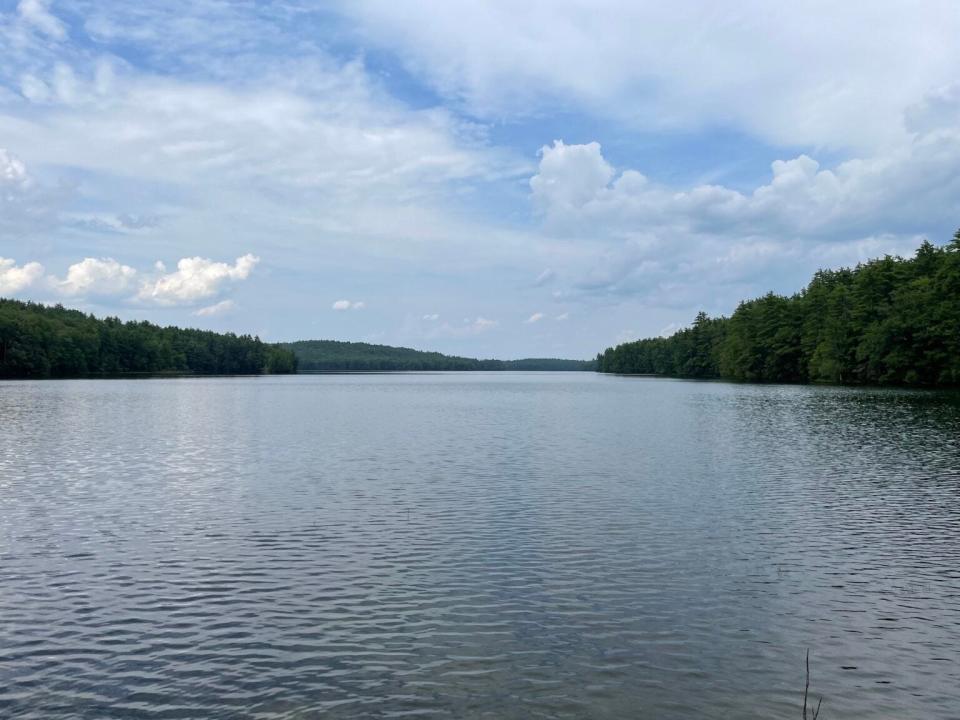Extreme weather adds to concern over NH dam safety
Experts predict an increase in extreme precipitation events through the next century, bringing new emphasis to the importance of dam safety in New Hampshire.
The state has about 176 dams that in the case of failure risk the probable loss of human life and significant property damage. Repairs are set to begin this year on at least a dozen of these high-hazard dams found to be in poor condition, with the help of federal funding from the American Rescue Plan Act. The number of high hazard dams in poor or unsatisfactory condition in New Hampshire increased by 51 percent over a period of three years, according to 2022 AP News analysis.

A “high hazard” classification is assigned to dams that could cause the loss of human life and community destruction if they fail. The state’s last high-hazard dam failure was in 1996, when the Meadow Pond Dam failed in Alton. The failure caused one death, two injuries, and $5 million in property damages.
During intense rainstorms this month, the Forest Lake Dam in Winchester was washed out by flood waters. The privately owned dam was determined to be in poor condition in a 2019 assessment, but it is classified as low hazard so its failure did not create significant harm to people or property.
Most of the roughly 2,600 dams in New Hampshire are state-owned, but some fall under private ownership or federal authority. However, all of them must be inspected and meet state safety standards regardless of ownership. The AP analysis found the majority of high-hazard dams in poor condition were state-owned.
In the months following the analysis, ARPA funding was approved by the Executive Council for the repair or removal of state-owned high-hazard dams. A total of $35 million in funding was allocated, with $30 million toward state-owned dams and $5 million toward grants to remove or repair municipally owned dams.
Corey Clark, chief engineer for the New Hampshire Department of Environmental Services Dam Bureau, said that since the funding was approved, over a dozen dams have been identified as in need of funding.
“The money is being used for everything from development of breach inundation maps and emergency action plans, to rehabilitation designs to full construction projects,” he said.
Clark anticipates construction on some of these projects will begin later this year.
Steve Doyon, a dam engineer at the New Hampshire Dam Bureau, explained a dam is considered in poor condition when it can no longer meet certain discharge requirements – the water flow a dam should be able to manage – or has structural deficiencies, like cracks or other signs of instability.
According to Clark, these discharge requirements are tested through computer modeling. High-hazard dams are supposed to handle 2½ times the output of a 100-year storm event, an extreme precipitation event that has a statistical 1 in 100 chance of occurring. Dams in poor condition, however, are unstable during the modeling of these extreme precipitation events.
“The modeling software is going to create a flow coming into the pond that is held back by the dam,” Clark said. “The dam has to pass that flow without operation, meaning you can’t open gates or do anything else because a lot of times that requires manpower to do so and manpower may not be able to get to the site.”
According to the 2021 New Hampshire Climate Assessment, if the current rate of atmospheric greenhouse gas emissions remains unchanged, extreme precipitation events are expected to increase a minimum of 20 percent, meaning flood risk will continue to increase through the end of the 21st century.
Clark said there are some steps in place to consider increased rainfall, though climate change has not explicitly altered the bureau’s systems. The computer modeling software uses databases like the National Weather Service’s Atlas-14 for up-to-date information on average precipitation. Clark expects that as the climate changes, data systems will report higher levels of rainfall to define a 100-year storm.
“It doesn’t get taken into account directly during the design process. … We are, however, taking that rainfall data which is going to constantly be updated by those agencies and those resources to reflect these increases that we’re seeing,” he said.
While there may be a fear that increased rainfall could lead to dam failures, Doyon said dam failure is rare. However, there may always be some risk for downstream communities.
“I don’t want to minimize the risk … if you live near any dam, that risk shouldn’t be discounted,” he said. “But instances of failure are extremely rare.”
He added that the majority of the state’s 2,600 regulated dams are non-menace, meaning they would have little to no impact on communities in the case of failure.
This story was originally published by New Hampshire Bulletin
This article originally appeared on Portsmouth Herald: Extreme weather adds to concern over NH dam safety

